
Benjamin Friedman was an American football player and coach, and athletic administrator.

Harry Clifton "Curley" Byrd was an American university administrator, educator, athlete, coach, and politician. Byrd began a long association with the University of Maryland as an undergraduate in 1905, and eventually rose to the position of university president from 1936 to 1954.
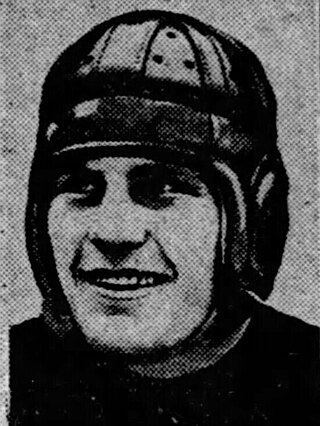
Herbert Walter Joesting was an American football player and coach. He was a consensus All-American fullback while playing for the Minnesota Golden Gophers in both 1926 and 1927. He also played three seasons in the National Football League (NFL). He was inducted into the College Football Hall of Fame in 1954.

Thomas Allison Mont was an American educator, university administrator, college football coach, and National Football League (NFL) player. He played quarterback for the Washington Redskins as a back-up behind Sammy Baugh for three seasons. Mont served as the head football coach for three years at the University of Maryland and eighteen years at DePauw University. He also served as the DePauw athletic director for fifteen years.

John Edgar Faber Jr. was an American microbiologist and college football and lacrosse coach at the University of Maryland. Faber served as the Maryland lacrosse coach from 1928 to 1963, during which time he compiled a 249–57 record and secured numerous national and conference championships. Faber was inducted into the National Lacrosse Hall of Fame in 1963. He coached the Maryland football team in 1935 and again, as a co-head coach alongside Al Heagy and Al Woods, from 1940 to 1941. He compiled a 12–13–4 record in football.
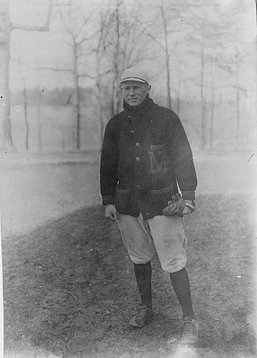
Howard Burton Shipley was a multi-sport athlete and coach for the Maryland Terrapins at the University of Maryland. He is probably most remembered as the first and long-time head coach of the men's basketball team. He also coached the Maryland baseball team.

The Maryland Terrapins football team represents the University of Maryland, College Park in the sport of American football. The Terrapins compete in the NCAA Division I Football Bowl Subdivision (FBS) and the Big Ten Conference. The Terrapins joined the Big Ten Conference on July 1, 2014, following 62 years in the Atlantic Coast Conference as a founding member. Mike Locksley is the head coach of the Terrapins.

Edward Paulette Hurt was an American football, basketball, and track coach. He served the head football coach at Virginia Theological Seminary and College—now known as Virginia University of Lynchburg—in Lynchburg, Virginia from 1925 to 1928 and Morgan State College—now known as Morgan State University—in Baltimore, from 1929 to 1959. Hurt also had long tenures at the head basketball and head track coach at Morgan State. Across those three sports, his teams at Morgan State won 36 Central Intercollegiate Athletic Association (CIAA) championships and produced two Pro Football Hall of Famers and an Olympic gold medal winner. Hurt's Morgan State Bears football teams won six 6 black college football national championships and 14 CIAA titles. Hurt also served as the school's athletic director from 1958 to 1970. He played college football at Lincoln University in Pennsylvania and Howard University in Washington, D.C.

The modern Maryland Terrapins football program representing the University of Maryland traces its lineage to the team first formed at what was then the Maryland Agricultural College (MAC) in 1892. In the initial years, due to the rudimentary state of intercollegiate athletics and interstate travel, all games were played against local colleges, high schools, and athletic clubs.
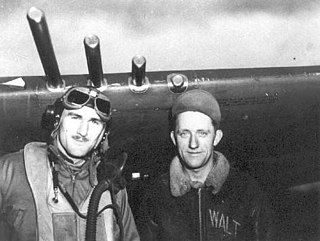
John William Guckeyson was an American athlete and military aviator. He was the first University of Maryland football player selected in the NFL Draft. Guckeyson was killed in combat as a fighter pilot during the Second World War.
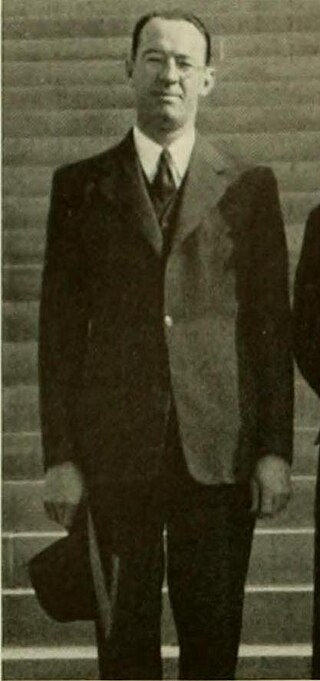
William C. "Zuke" Supplee was an American educator and college athlete. He attended the University of Maryland where he played college football and basketball for the Maryland Terrapins, and competed in track & field. In 1923, he received second-team All-America football honors, which made him the first Maryland player honored as such.
Gerald Theodore "Snitz" Snyder was an American football player and Army officer. He played college football as a back for the Maryland Terrapins at the University of Maryland. Snyder played professionally for two seasons in the National Football League (NFL).

Lucien Anthony "Lu" Gambino was an American football running back. He played college football for Indiana University, and after military service in the Second World War, the University of Maryland. While playing for Maryland, he set the National Collegiate Athletic Association (NCAA) season scoring high for 1947 with 16 touchdowns and 96 points and was named the 1948 Gator Bowl most valuable player. Gambino played professional football for two years with the Baltimore Colts in the All-America Football Conference (AAFC), an early competitor of the National Football League (NFL).

Doyle P. Royal was an American collegiate soccer and tennis coach. He coached the University of Maryland soccer team from 1946 to 1973, and the tennis team from 1954 to 1980.
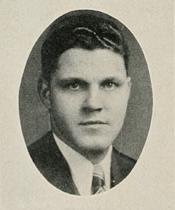
Albert B. Heagy was an American chemist, educator, politician, and college lacrosse player and coach. Alongside, Jack Faber, he was the co-head coach of the University of Maryland lacrosse team from 1931 to 1963, and the head coach from 1964 to 1965, and amassed a combined record of 245–57–7. During that time, Maryland secured six outright national championships, two shared national championships, and nine Atlantic Coast Conference championships. He was inducted into the National Lacrosse Hall of Fame in 1965. Heagy also served as the Maryland state chemist and the mayor of University Park.

William W. "Moon" Evans was an American attorney, Marine Corps officer, and athlete. He played college football, basketball, and lacrosse at the University of Maryland. In lacrosse, Evans led the nation in scoring in 1929 and 1930. He was inducted into the National Lacrosse Hall of Fame in 1966 and the University of Maryland Athletic Hall of Fame in 1983.

Raymond J. Poppelman was an American Marine and athlete. He attended the University of Maryland, where he played on the football and lacrosse teams. Poppelman was inducted into the University of Maryland Athletic Hall of Fame in 1988.
Dr. Julius John Radice was an American physician and athlete. He played college football, basketball, and baseball at the University of Maryland. Radice was inducted into the University of Maryland Athletic Hall of Fame in 1982.















